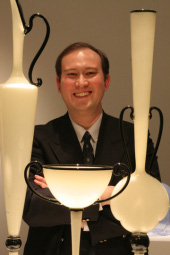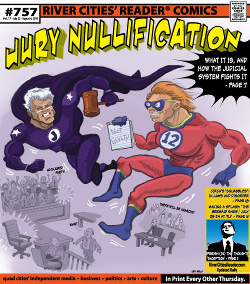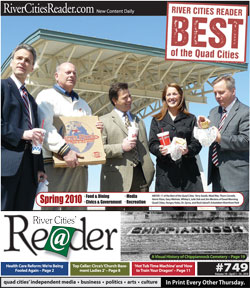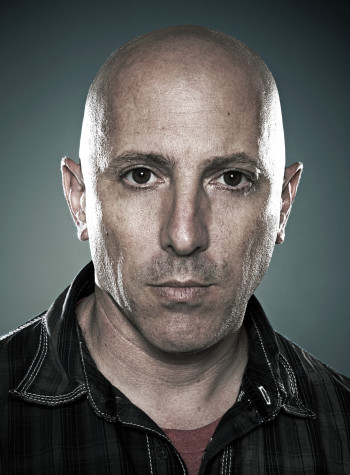 He was a frightening figure when I first met him, with tattoos of verses in Arabic and lines from literature on his arms, a shaved head, a ragged beard, and the combination of a stern voice and piercing gaze.
He was a frightening figure when I first met him, with tattoos of verses in Arabic and lines from literature on his arms, a shaved head, a ragged beard, and the combination of a stern voice and piercing gaze.
As an Indian who is often mistaken for someone from the Middle East, I had received plenty of negative attention from people who looked like him. But I could not avoid him.
It was 2002, and Curtis Butterfield was my freshman biology teacher and my coach for the junior-varsity academic team at Moline High School.
Early in the school year, Butterfield gave me a confrontation, but not the one I had been dreading.
"You know this is not your best work," he said, with the voice and glare used to full effect, "and if you think you're staying in my class, you need to start doing better work."
Butterfield "doesn't invite people to come in and learn; he demands that students learn," said Nicholas Pitz, a Moline High German teacher and varsity academic-team coach. "Learning is not an option."

 Here are the winners in our fall 2010 Best of the Quad Cities balloting, covering four categories: Arts, Culture, and Entertainment; Night Life; Shopping and Services; and People.
Here are the winners in our fall 2010 Best of the Quad Cities balloting, covering four categories: Arts, Culture, and Entertainment; Night Life; Shopping and Services; and People.  In Sean O'Harrow's telling, the Figge Art Museum is gaining an ally as much as it's losing an executive director.
In Sean O'Harrow's telling, the Figge Art Museum is gaining an ally as much as it's losing an executive director. Like most people, Mike Angelos was surprised to learn about the power of juries to disregard the law. "The courts are really stacked against people," he said.
Like most people, Mike Angelos was surprised to learn about the power of juries to disregard the law. "The courts are really stacked against people," he said.
 On February 17, the Iowa Board of Pharmacy voted unanimously to support a motion recommending "that the legislature reclassify marijuana from Schedule I of the Iowa Controlled Substance Act ... to Schedule II ... with the further recommendation that the legislature convene a task force or study committee ... for the purpose of making recommendations back to the legislature regarding the administration of a medical-marijuana program."
On February 17, the Iowa Board of Pharmacy voted unanimously to support a motion recommending "that the legislature reclassify marijuana from Schedule I of the Iowa Controlled Substance Act ... to Schedule II ... with the further recommendation that the legislature convene a task force or study committee ... for the purpose of making recommendations back to the legislature regarding the administration of a medical-marijuana program." When Jodee O'Tool's son entered kindergarten in the Bettendorf Community School District in 2008, she was troubled by the meals the school offered.
When Jodee O'Tool's son entered kindergarten in the Bettendorf Community School District in 2008, she was troubled by the meals the school offered. Here you'll find the Best of the Quad Cities in 63 categories, including articles on 11 winners. Voting was open from mid-January to mid-March, and our readers submitted nearly 500 valid ballots. (Reasonable responses to 20 of the 63 questions were required.) The winter balloting covered the areas of Food & Dining; Civics & Government; Media; and Recreation. (Summer balloting will cover the areas of Arts, Culture, & Entertainment; Night Life; Shopping & Services; and People.)
Here you'll find the Best of the Quad Cities in 63 categories, including articles on 11 winners. Voting was open from mid-January to mid-March, and our readers submitted nearly 500 valid ballots. (Reasonable responses to 20 of the 63 questions were required.) The winter balloting covered the areas of Food & Dining; Civics & Government; Media; and Recreation. (Summer balloting will cover the areas of Arts, Culture, & Entertainment; Night Life; Shopping & Services; and People.) Maynard James Keenan -- the frontman for prog-metal gods Tool, the co-leader of A Perfect Circle, and the founder of Puscifer -- isn't the type of person you'd expect to see as the subject of a thorough documentary. He has a reputation for being reclusive, and for jealously guarding his privacy. As he says in the movie Blood Into Wine, "I'm not much of a people person."
Maynard James Keenan -- the frontman for prog-metal gods Tool, the co-leader of A Perfect Circle, and the founder of Puscifer -- isn't the type of person you'd expect to see as the subject of a thorough documentary. He has a reputation for being reclusive, and for jealously guarding his privacy. As he says in the movie Blood Into Wine, "I'm not much of a people person."







